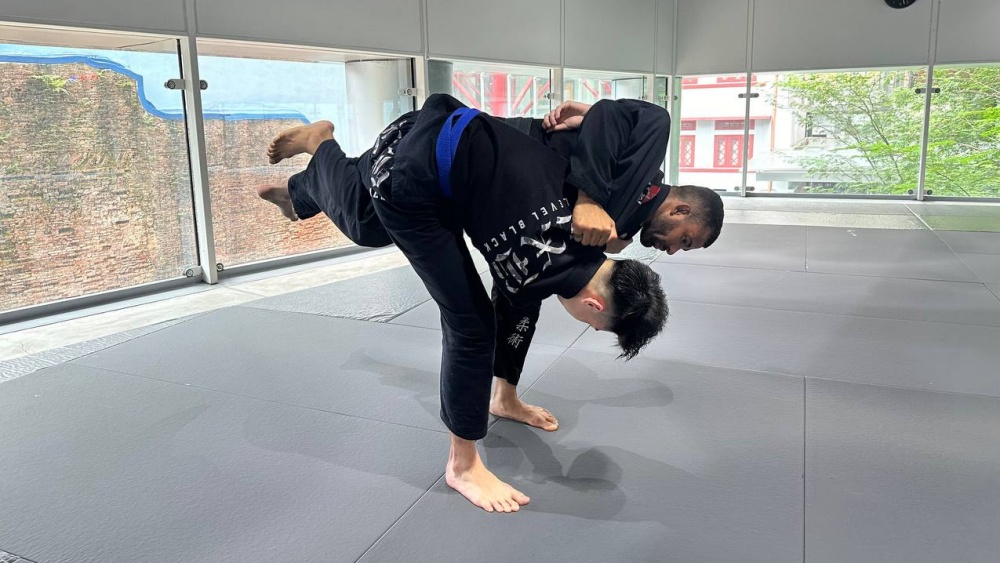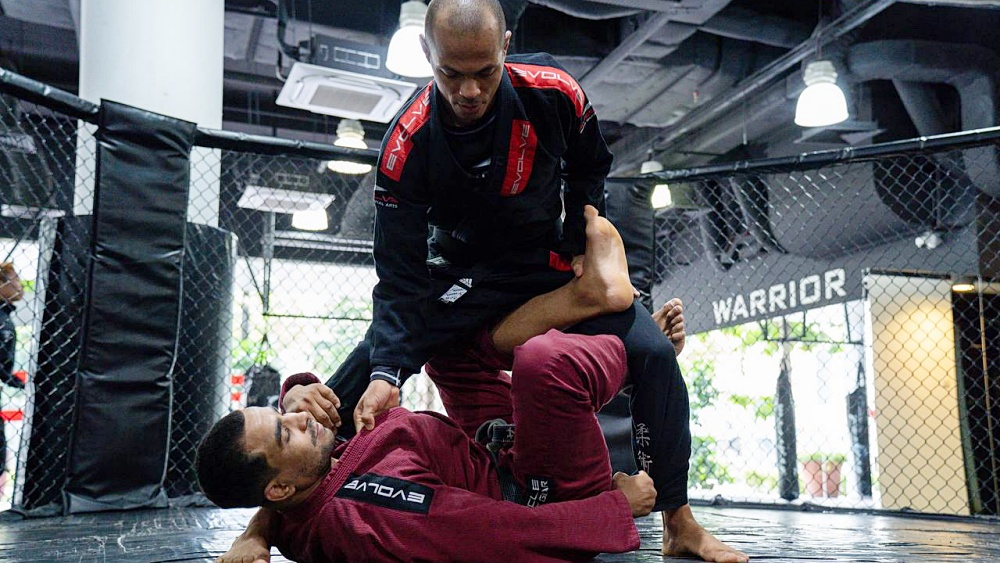In the world of martial arts, Brazilian Jiu-Jitsu is known for its complex ground and submission techniques. This is true in many ways, but it is not the complete story; BJJ is also a grappling art that incorporates takedowns and throws in its arsenal. Since Jiu-Jitsu stemmed from Judo and Japanese Ju-Jitsu, it is not uncommon to see cross-pollination in terms of techniques used. Among these is the ever-popular uchi mata. This is an elegant yet powerful throwing technique that will make you a monster in the stand-up. We will go over the basics of this throw in this article.
The Basics Of The Uchi Mata
The uchi mata, often referred to as the “inner thigh throw,” is a popular throw that leverages positional dominance and technique. The throw involves sweeping the opponent’s inner thigh with your leg. This, in effect, throws them off balance and vulnerable to falling over. It is a highly nuanced throw and may seem too complicated for a beginner. Yes, it has several subtle nuances, but with practice, we believe that it can be learned by grapplers of all levels.
The Mechanics Behind The Uchi Mata
In this video, legendary Judoka Jimmy Pedro teaches the mechanics of the throw. He starts by saying that pulling the opponent towards you is the first critical step. From the initial collar and sleeve grip, pull the opponent to generate off-balancing force (kuzushi). This is super important as it ensures that you build power and, at the same time, weaken the opponent’s stance. Perform a cross step with your lead leg and place your support leg in between their legs. The final step is to lift the opponent with your lead leg (reaping inside their leg) as you turn your body sideways to complete the throw. Doing these steps perfectly should result in a smooth, almost effortless finish.
No-Gi Uchi Mata
Sambo Master Vlad Koulikov and the Evolution Grappling Academy share their breakdown of the No-Gi uchi mata in this video. They start with the initial grip. Vlad likes to use the whizzer and the wrist (or elbow) control when performing this throw. This combination is excellent for control and makes it easy to negate typical escapes from the opponent. He likes to perform a deep step with the supporting leg, similar to the Gi variant we shared. Instead of finishing with the reap, he likes to do a technique he calls the “sumo lift,” where he lifts the opponent using a side lifting motion similar to how sumo wrestlers start their matches. Doing this displaces the opponent’s weight, making it easy to finish with the reap and turn motion.
Adapting The Uchi Mata For BJJ And Mixed Martial Arts
As the uchi mata originates from Judo, its application in BJJ and MMA requires specific adaptations. Since BJJ practitioners, in general, often adopt a lower stance to defend against takedowns, the entry to the uchi mata needs to be quicker and more precise. Also, BJJ players must be mindful of potential guard pulls and ensure they secure the top position after executing the throw.
In the context of mixed martial arts, it is best to apply the uchi mata from a clinching situation, particularly if you have an underhook or whizzer, as shown in the previous video. Another common situation to use the throw is from a failed single-leg takedown. Maintain a solid connection to your opponent as they grab your leg, shift your weight forward, and pull off the uchi mata without hesitation. More often than not, you should be able to launch your opponent with this setup.
Common Problems
The uchi mata has many moving parts if you think about it. From your initial entry, positioning, and finish, you need to take note of several important steps. Here are common problems you’ll encounter in your first few weeks of study.
- Awkward Hip Placement: One of the most common mistakes is not getting the hips in the right spot relative to your opponent’s. A slight misalignment reduces the throw’s leverage and may be why you can’t throw them with enough power. Make sure that you enter using the correct footwork, as shown in the videos.
- Weak Pull On The Upper Body: The uchi mata is not just about the leg sweep; the upper body also plays a pivotal role. If you’re not pulling your opponent off-balance, the throw’s effectiveness diminishes. To correct this, concentrate on synchronizing your upper body pull with your leg movement. Your body should work as a whole unit.
- Fear Of Commitment: The uchi mata requires full commitment. Pausing mid-way can result in a failed throw or, worse, a counter from your opponent. The key is to practice the throw in a controlled environment, building confidence in the technique, and then applying it with total commitment during sparring.
Combining The Uchi Mata With Other BJJ Techniques
Once you become adept in using the uchi mata, you can now use it to set up your other offensive options from both standing and on the ground. An example of this is using a failed uchi mata to set up a front headlock. This is a simple yet effective combination you can do to keep you on the offensive for as long as you can.
Conclusion
In conclusion, the uchi mata is more than just a throw; it symbolizes how martial arts can be considered a sport and art all in one. It is a move that is both beautiful to look at and devastating to experience. We encourage you to take a look at this classic throw and spend some time learning its intricacies. It may take a few months of consistent trial and error, but we guarantee that it will make your standing game that much better.
It is best to build a system where you can cycle several techniques (including the uchi mata) depending on the situation. This is an investment that is sure to pay dividends once you become better and more experienced.
You may also like:
















